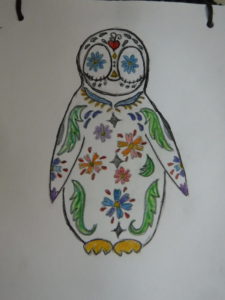The Final Installment
So, one last post before we get back to Punta Arenas.
We wrapped up science and got all of our packing done before we arrived at Palmer Station. The repair of the big crane on the Gould, and the transfer of containers from the Natty B, went very smoothly. We were allowed to be on deck while the two ships were rafted together, but when the crane operations started, we all had to go back inside and stay out of the way.
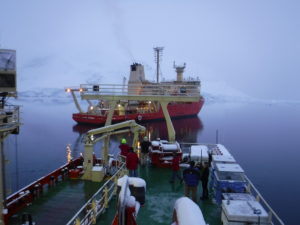
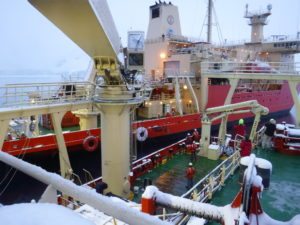
The offload at Palmer Station also went smoothly, along with the transfer of a whole bunch of stuff from the station that needs to go back to Punta Arenas. Since we had finished our packing and cargo paperwork, we were able to spend a little time relaxing at the station. There was an open mic night, which was highly entertaining, and a science talk night. We did present our project and why were doing it, along with a short video tutorial on bucket casting (as a science talk, not for open mic).
A highlight of our short stay was the opportunity to hike the glacier behind the station. We had a rare sunny day, although it was still really cold! The rocky area behind the station is called the “backyard”, and up until about 20 years ago, it didn’t exist. The glacier has receded over that time and left a rocky pile behind. It’s a challenge to get through there without “post holing” – where your foot goes waaaaaay down through the snow, between the rocks. It took us a bit more than 2 hours to make our way up, where we ate a lunch of sandwiches, chips and chocolate. The trip down was considerably shorter (no, we didn’t slide down), and we went around the rock pile instead of over it, so we managed to find fewer holes.
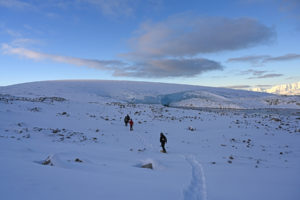
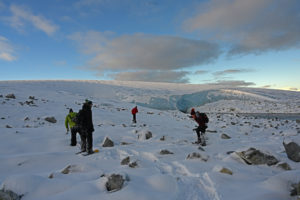
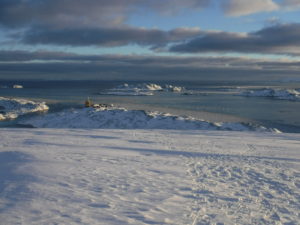
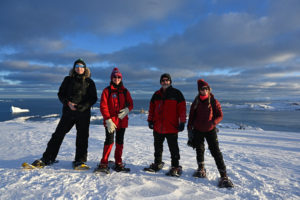
We also posed infront of the huge fuel tank. I think it’s kind of a traditional spot for photos.
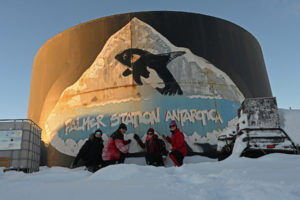
Because of the clear weather, this was one of our first opportunities to see the stars in the night sky. Also, the ship has outside lights on at night so that they can see where they are going. It makes star-gazing impossible. I saw Uranus rise above the horizon – it was obviously a planet because it was so bright – and I saw the real Southern Cross (it looks more like an “L” because some of the stars are faint). You might be able to see it in the picture below.
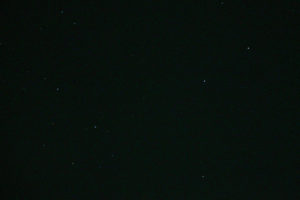
The demobilization at Cape Shirreff went quickly. The onshore crew was very organized and had everything ready at the beach. The teams loaded zodiacs quickly, and everything was transported to the ship in just a few hours. Then the seal crew got to take their first shower in several weeks, and do laundry! They had a good season and were able to tag 10 leopard seals.
So now we are on our way back to Punta Arenas. The weather looks good for the crossing, for which all of us are again grateful. Even though most of us have gotten used to the ship motion, rough seas make doing even simple things difficult, and we just don’t need that. For my final art project, my husband suggested that I try drawing a sugar skull penguin. Although it may not look much like a penguin at least it’s colorful!
